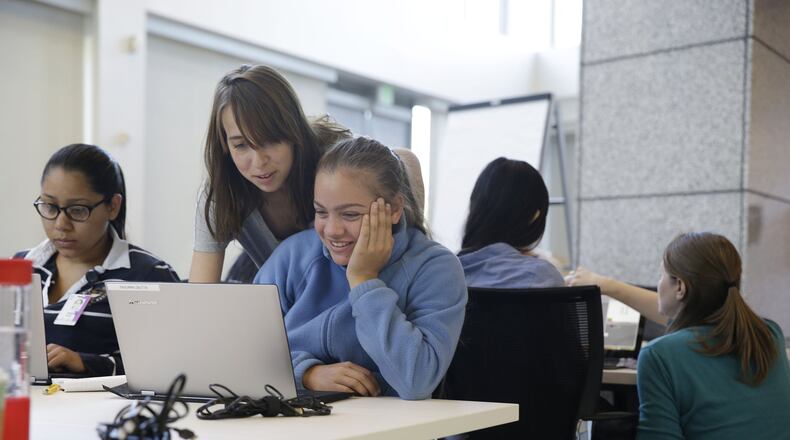For years, advertisers and marketers alike have known that women reign when it comes to the power of the purse – from influence to spending. In fact, according to Nielsen, women will command 75% of discretionary spend by 2028.
With Saturday, Aug. 26 being Women’s Equality Day – a day our nation celebrates women’s progress and its commitment to further equity and protect the rights of women - it’s important to recognize that women are still alarmingly underrepresented in far too many career paths that lead us into the future. Technology is no exception.
According to a Gallup Report, only 18% of college graduates studying computer science are women. Another report found that the proportion of women to men in tech roles has actually declined – and women who pursue tech leave the field by the age of 35. Likewise, the pandemic, often coined the “she-session” negatively impacted women and led many to exit the workforce, bringing the labor participation rate of women to a 33-year low.
Credit: contributed
Credit: contributed
If these numbers alone don’t surprise you, the implications of women’s lack of representation in emerging technology surely will. Take for example, the Siris and Alexas of the world – an increasingly common use of AI technology given predominantly female names and voices. And yet, these AI go-to’s often have trouble understanding and recognizing women’s voices correctly, showing an inherent gender bias of a tool that is weaved into our daily lives.
Facial recognition software has the same problem with a lower degree of accuracy for women, and women of color, like me, in particular. And health apps often don’t account for women-specific conditions, while others perpetuate male assumptions. This can be attributed, in part, to machine learning, as it’s based on data sets that are informed by people. In tech, the people designing those systems and data sets are predominantly male.
Just as diverse teams fuel innovation, better manage risk and create products that cater to a broader audience, so too does diversity drive better results, decisions and products when it comes to technology. Women bring a unique set of experiences, insights and solutions. In a world increasingly driven by technology, omitting women’s perspectives is not just a question of equity but of missed potential. So how do we pave the way for women in tech and bring a woman’s touch to tech design? It all starts with skills.
Encouraging and supporting young girls and women to pursue STEM (Science, Technology, Engineering, and Mathematics) education and careers is crucial. By fostering an inclusive learning environment and offering mentorship programs, we can help bridge the gender gap in technology and increase the representation of women in the industry. With computer-related jobs expected to grow by 15% from 2021 to 2031 (U.S. Bureau of Labor Statistics), there is a tremendous opportunity to provide women with requisite skills to enter this field.
I will always continue in my pursuit to remove barriers to entry for women technologists and want to celebrate some important progress that’s being made. For example, many leading companies are no longer requiring 4-year degrees for some technical roles. And legislation is driving change as well. Recently, 8 states including Maryland, Pennsylvania, New Jersey and more passed legislation eliminating degree requirements from many state job postings. And I’ve personally seen how these changes unlock potential and open the door to new opportunities as more than half of Per Scholas learners hold a high school diploma as their highest education credential and yet are just as if not more well suited for entry-level technology roles.
In addition to skill development and diversity initiatives, it is crucial to challenge stereotypes and unconscious biases in the tech industry. Raising awareness about the contributions of women in technology and showcasing successful female role models can inspire the next generation of women in tech. To truly harness the power of women’s perspectives in tech design, companies must create a safe and inclusive space for employees to voice their ideas and concerns. Encouraging open discussions and valuing diverse opinions can lead to more innovative and inclusive tech products and services that cater to a broader audience.
Promoting diversity and inclusivity in tech is not just a matter of fairness but a strategic imperative. Embracing women’s perspectives in technology will result in more ethical, innovative, and user-centric tech solutions. By investing in skills development, addressing biases, fostering diversity, and challenging stereotypes, we can unlock potential for a more equitable and progressive tech industry that benefits everyone.
Jasmine Miller is chief training officer of Per Scholas, a nonprofit dedicated to closing the technology skills gap.
About the Author
Keep Reading
The Latest
Featured



